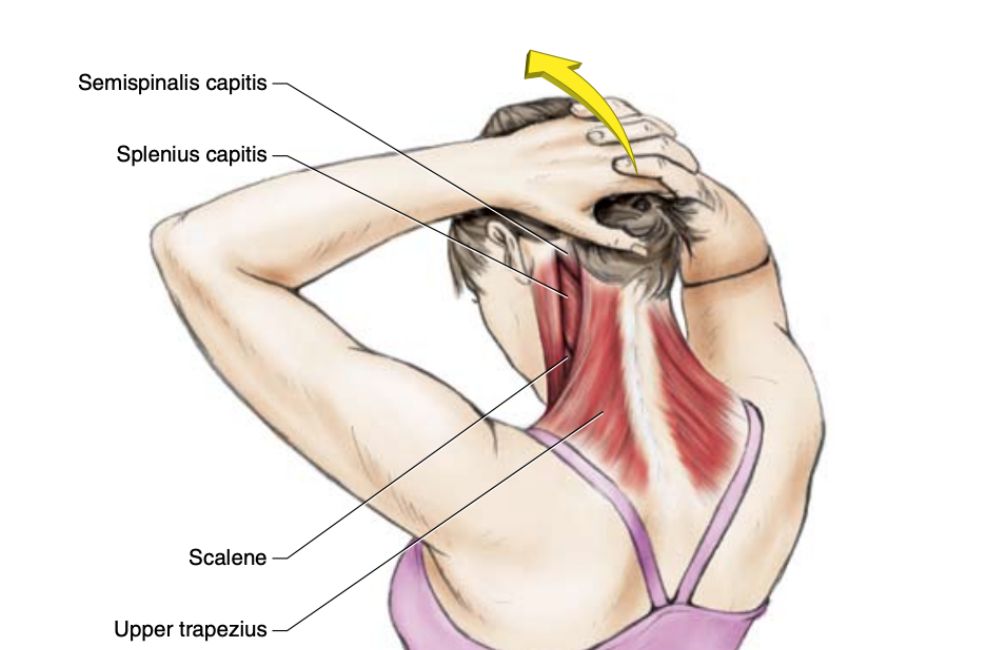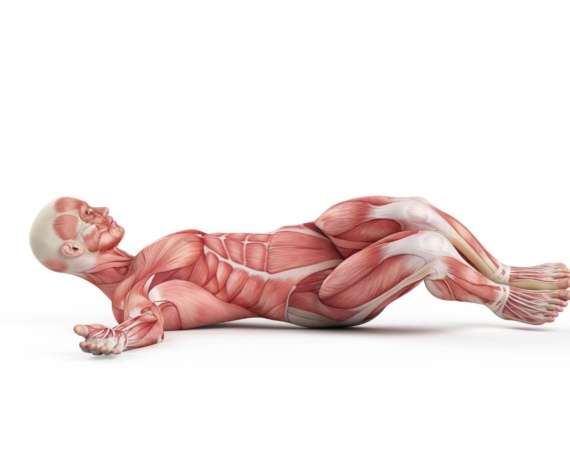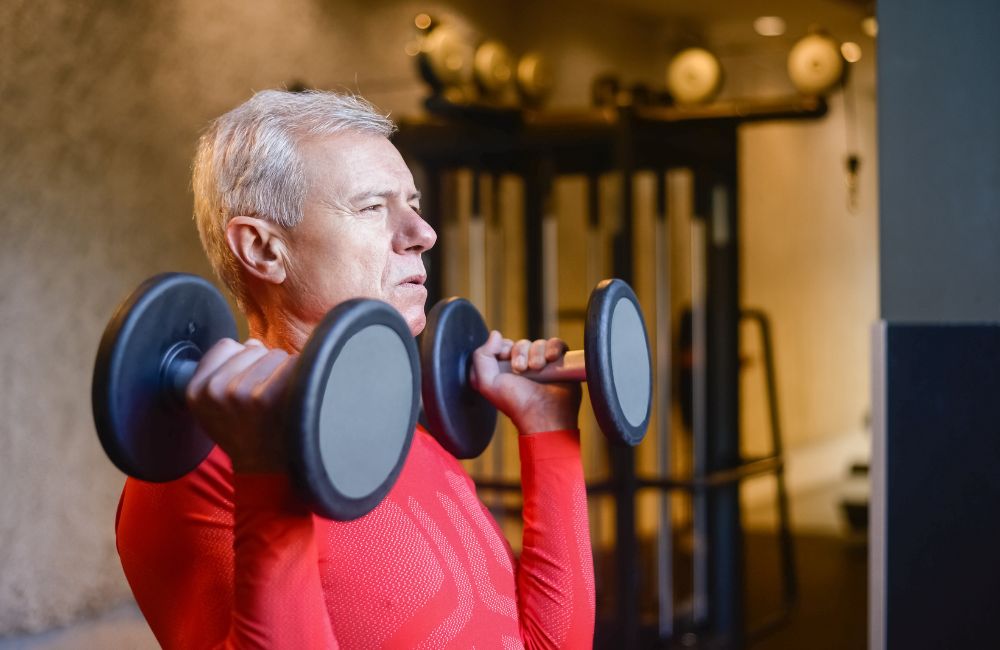
Do these strength training exercises regularly to bulletproof your body and build stronger muscles all over.
If you’re entering your golden years, you may be wondering how you can avoid the detrimental effects of aging.
While some changes that occur due to the aging process are inevitable, there are a couple of key steps you can take to keep yourself strong and vital, no matter your age.
For instance, eating a healthy diet and getting sufficient sleep each night can do wonders for your health. In fact, these are two of the best ways to avoid cardiovascular disease.
Additionally, completing regular exercise can help to maintain your muscle mass in your later years.
For this reason, I have compiled some of the best exercises seniors should consider completing in the gym in order to battle the effects of sarcopenia.
Sarcopenia and the Older Adult
Sarcopenia is age-related muscle loss. To some degree, we all lose muscle mass as we age. That being said, we can mitigate the effects of sarcopenia by regularly training the major muscle groups of the body.
You can’t stop the effects of time, but you can take some steps to lessen the degree to which you lose muscle later in life.
In fact, some research has shown that regular resistance training can significantly decrease the effects of sarcopenia.
You’ll also like:
Want to Age Well? Build Overall Body Strength and Muscle Without Weights With These Five Moves
What are the Best Exercises for Older Adults?
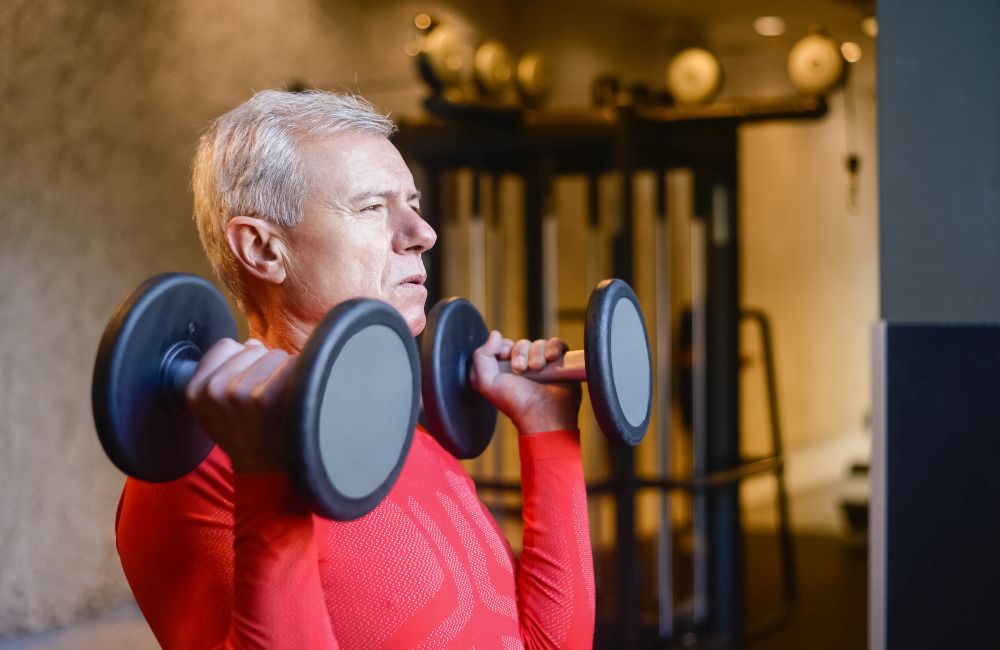
For those older individuals hoping to avoid the worst effects of sarcopenia, a mix of resistance training and cardiovascular exercise is just what the doctor ordered.
Additionally, flexibility training can help to improve the range of motion. This, in turn, can allow you to produce more force during other forms of exercise and during your daily activities.
In this post, we will focus exclusively on some of the best resistance training and cardio exercises. However, you should also be sure to participate in some yoga or stretching sessions as well throughout the week.
Chin Ups
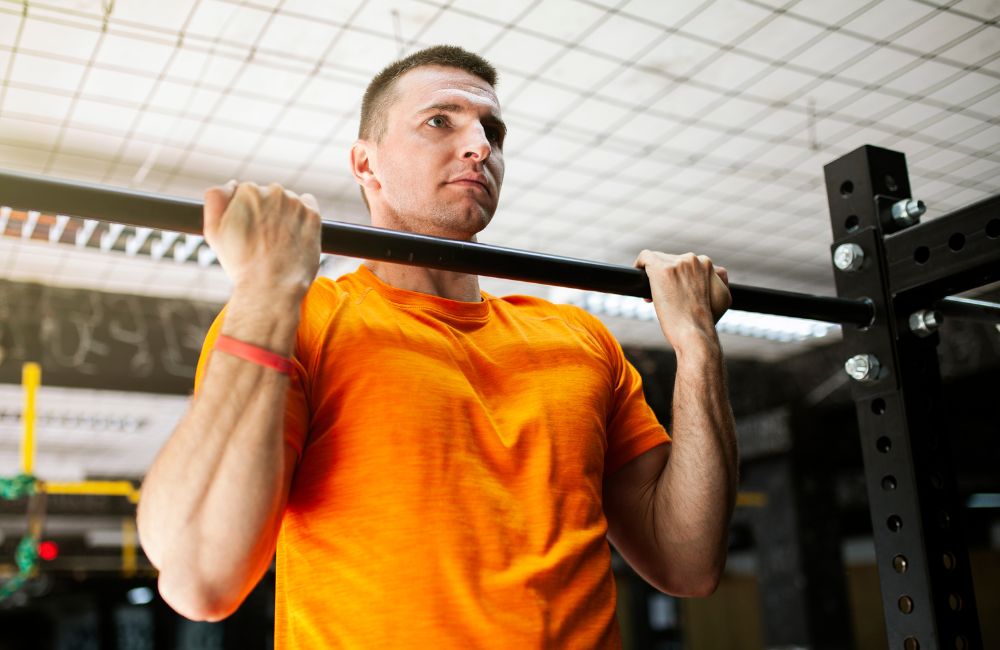
Pull-ups and chin-ups are some of the best bodyweight exercises in existence. These movements work tons of muscles in the upper body including the lats, biceps, forearms, and various shoulder muscles.
If you don’t yet have enough strength to do pull-ups in their purest form, never fear! There are a number of ways to modify the movement to make it easier.
For example, you can use bands, platforms, or specialized machines to take off some of your body weight during pull-ups.
This makes the movement much less intimidating. Also, this enables you to work your way up to your first full pull-up!
How to Perform
- Grasp the bar with whichever grip you prefer (palms forward, palms facing you, or palms facing in opposite directions).
- Hang from the bar with your muscles engaged so that your shoulder blades are pulled down and back.
- Next, contract your biceps and lats in order to pull your chest up toward the bar.
- Once your chest touches the bar, slowly lower yourself back down to a hanging position.
- Complete 8-12 reps per set, for 3 sets per session. Perform 3-4 sessions per week.
Squats
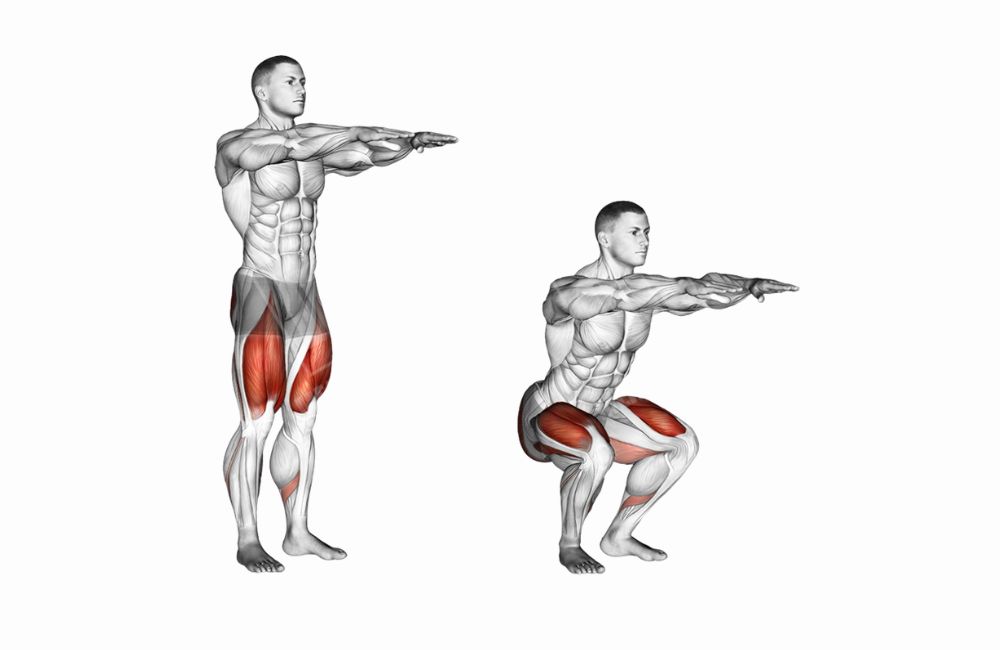
If you were to only pick a couple of exercises to do for the rest of your life, squats should be on the list.
This movement is extremely functional, as we use the squatting motion and muscles to sit, stand, and perform various other functions throughout the day.
How to Perform
- Start standing with your feet roughly hip-width apart.
- Slowly, bend your knees and allow your hips to flex, keeping your back straight.
- Once you’ve gone down as low as you can (without your heels lifting up), straighten out your knees and hips, returning to standing.
- Complete 10-15 reps per set, for 3 sets per session. Perform 3-4 sessions per week.
Cardio Rowing
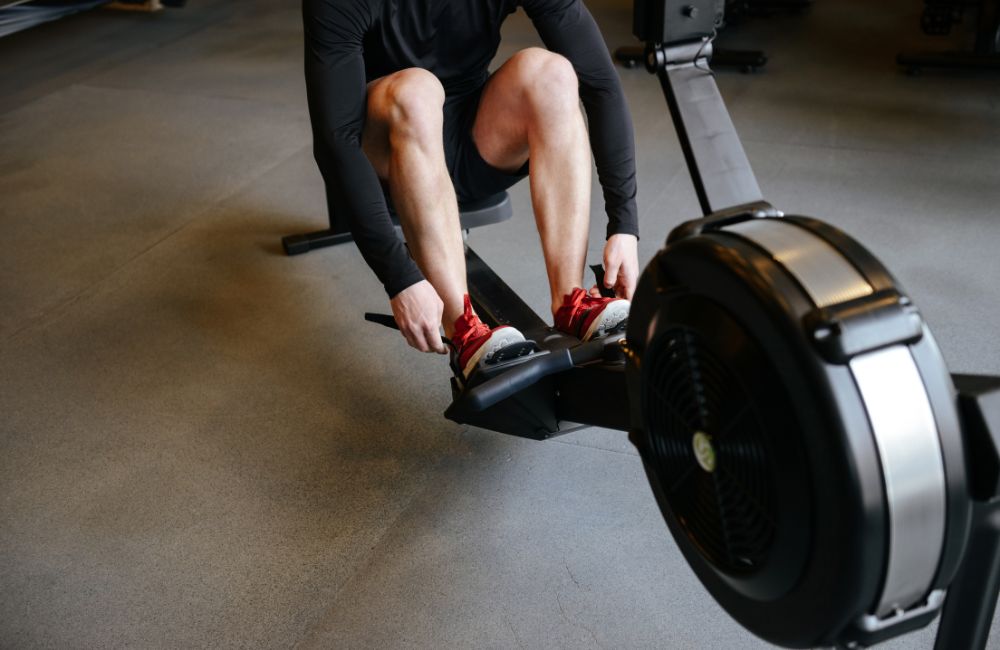
Rowing provides a low-impact form of cardiovascular exercise. Plus, this movement works many of the muscles of both the upper and lower body. All in all, rowing is a great choice for seniors and anyone looking to get in better shape.
How to Perform
- Set the rowing machine to your desired resistance. This will vary widely based on the specific machine, your goals, and a variety of other factors.
- Next, secure your feet with the provided straps. This will allow you to maintain your position as you pull and slide on the seat during the exercise.
- Then, grab the handholds and begin rowing by pushing with your legs and pulling with your arms.
- For beginners, a good rowing workout consists of rowing 500 meters in under 2 minutes for 3 rounds, with 1 minute of rest between rounds.
- Complete 4-5 rowing workouts per week to reap the maximum benefits from this exercise.
Incline Barbell Bench Press
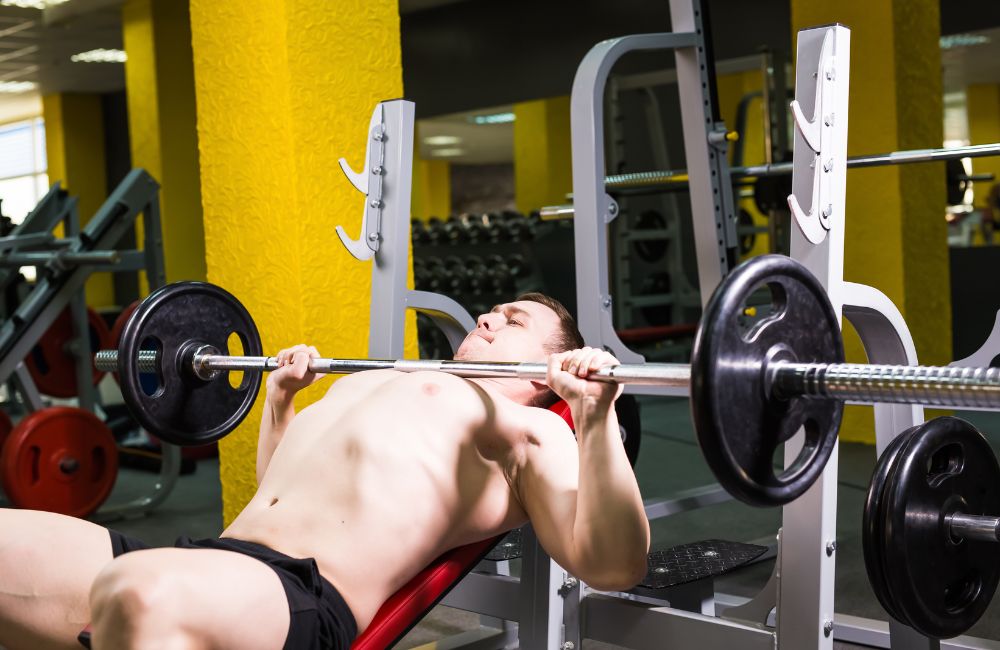
Thus far, we’ve reviewed the perfect exercise for the lower body, a great cardio exercise for seniors, and the best exercise for the “pulling” muscles of the upper body.
Now, it’s time to take a look at an awesome move for the “pushing” muscles of the upper body.
The incline barbell bench press works the pecs, triceps, and various other muscles of the upper body. It balances out the muscles used during the pull-up and rounds out your workout.
How to Perform
- Note: it is recommended to use a spotter for this exercise.
- Carefully set the desired weight on the bar.
- Lie back on the incline bench.
- Grasp the barbell with an overhand grip with your hands spaced apart at a comfortable distance.
- With the help of your spotter, slowly unrack the weight.
- Lower the bar down to your chest with control.
- Once you lightly tap your chest with the bar, begin to push it back up toward the ceiling.
- Pick a weight with which you can complete 8-12 repetitions with moderate difficulty.
- Complete 3 sets per session, for 3-4 sessions per week.
Conclusion
Old age comes for us all. This much has always been certain.
However, just because we can’t turn the clock back, this does not mean we have to suffer the ill effects of aging.
By performing regular resistance training and cardiovascular exercise you can limit the extent of age-related muscle loss that occurs in your later years.
Try this workout plan this week and enjoy the benefits you’ll soon start to realize!
Works Cited
- Casas, R., Castro-Barquero, S., Estruch, R., & Sacanella, E. (2018). Nutrition and Cardiovascular Health. International journal of molecular sciences, 19(12), 3988. https://doi.org/10.3390/ijms19123988
- Nagai, M., Hoshide, S., & Kario, K. (2010). Sleep duration as a risk factor for cardiovascular disease- a review of the recent literature. Current cardiology reviews, 6(1), 54–61. https://doi.org/10.2174/157340310790231635
- Delmonico, M. J., & Beck, D. T. (2016). The Current Understanding of Sarcopenia: Emerging Tools and Interventional Possibilities. American journal of lifestyle medicine, 11(2), 167–181. https://doi.org/10.1177/1559827615594343
- Yoo, S. Z., No, M. H., Heo, J. W., Park, D. H., Kang, J. H., Kim, S. H., & Kwak, H. B. (2018). Role of exercise in age-related sarcopenia. Journal of exercise rehabilitation, 14(4), 551–558. https://doi.org/10.12965/jer.1836268.134

